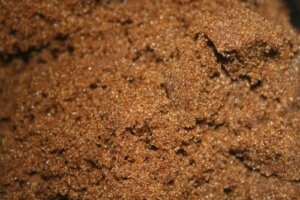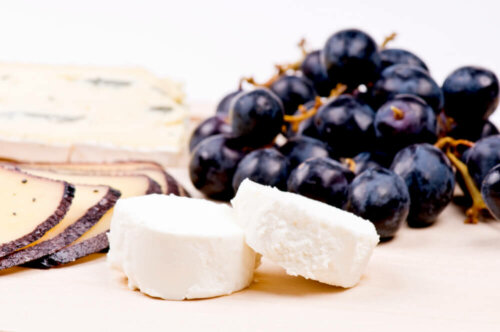Muscovado Sugar: Everything You Didn't Know About It


Written and verified by the nutritionist Anna Vilarrasa
Along with panela, muscovado sugar is one of the least refined sugars that we can find in the grocery store. With a slightly moist texture and marked flavor, its reputation as a healthy alternative has skyrocketed its production and consumption.
Today, we’ll tell you 8 things you may not know about muscovado sugar.
1. Muscovado sugar is a type of whole cane sugar
There are different products we can get from sugar cane that take different forms: raw sugar, refined sugar, syrup, or molasses. The difference between them comes from the level of moisture, the size of the crystals, and the proportion of sucrose.
The Food And Drug Administration (FDA) distinguishes between cane sugar and cane syrup. The other types of sugar, such as muscovado, are recognized as “other types of sugarcane with common names.”
All brown sugars are characterized by their brown color, with shades from yellow to the darkest brown. This is the case of the product that we’re analyzing in the article.
2. There are many types of whole sugar
But they’re all different from each other. Demerara, turbinado, panela, rapadura, jaggery. Although they may seem the same to us, they have some characteristics that differentiate them.
They come from the evaporation of the sugar cane and keep a part of the molasses that doesn’t evaporate completely. But the final amount of molasses is different in each variety. That’s why they have different textures and flavors.
Demerara sugar and turbinado are lighter and have drier crystals. Rapadura sugar usually looks like fine sand, as it’s passed through a sieve during the production process. And panela can be found in the form of medium-sized solid blocks.

3. The production process has different phases
Muscovado sugar can’t be created quickly, nor is it a waste product. Production must complete certain stages, including the following:
- Getting the juice from the sugar cane.
- Clarifying the fluid and evaporation to get the first concentration of the solid parts.
- Cooling leading to sugar crystals.
- Maintaining the molasses that appears during cooking to reach the final product, which is not refined.
4. It comes only from sugar cane
In general, manufacturers can only get sugar from two raw materials: sugar beet or sugar cane. The process they undergo before you get the final product is always the same, regardless of the plant it comes from.
The geographical region is decisive, especially because of the climate. Colder places, like Europe, mostly cultivate sugar beets. On the contrary, in tropical climates, they cultivate sugar cane.
In the case of muscovado sugar, it can only come from sugar cane. No matter what region the manufacturer is in, there’s no way to get it from sugar beets.
5. Muscovado sugar has a pronounced taste
Muscovado sugar tastes different from white sugar, honey, or sweetener syrups. It tends to have a more pronounced flavor, determined by the presence of molasses, which remains in the final product.
It might remind you of licorice or toffee, with a slightly bitter undertone. Its texture is also different, being a more moist type of sugar.
6. You can use it as a sweetener and in cooking
You can use muscovado sugar as a substitute for white sugar: in teas, coffees, and yogurts. But it also helps you to cook. In fact, it’s highly appreciated in confectionery, as it gives products a stronger flavor and a more attractive color.
Although it works wonders in recipes for cookies, cakes, or puddings, it’s not only useful in sweet dishes. You can also use it in sauces, such as vinaigrette, or in marinades to marinate meat.
It works differently when you cook it and you should keep that in mind if you want to substitute one product for the other. At the end of cooking, the muscovado sugar confers a more fruity and sweet taste and a moister texture.
7. It has the same nutritional composition as refined sugar
Although some people consider it to be healthier than white sugar, muscovado sugar has practically the same nutritional composition. Both provide 4 calories per gram and are almost 100% carbohydrates.
Although it’s true that when conserving a part of the cane juice, muscovado sugar has traces of some minerals such as magnesium, potassium, or calcium, we can’t consider it to be a valid source of these nutrients. It’s better to get them from healthier foods, such as vegetables, nuts, and whole grains.
For the same reason, although it’s a less processed sugar, it’s still an added sugar. So you should control your intake and not exceed 25 grams a day, according to the recommendations.

Find out: Four Amazing Exfoliants Made with Brown Sugar
8. Its market is growing
Today the interest in healthy and environmentally friendly food is growing notably. Especially among younger people, who dedicate more time and effort to find and buy less processed, local products, and ones whose production has a lower ecological impact.
This also translates into an increase in the consumption of unrefined cane sugars, among which is muscovado sugar. India, Colombia, and Pakistan are the main producers of these products today.
Muscovado sugar is natural, but it’s also an additive
Unlike white sugar, muscovado sugar is not refined. Its production process naturally preserves the molasses. That’s why it contains some minerals and phytonutrients and has a characteristic taste and texture.
Although it may be a better choice than refined sugar, you shouldn’t overuse it, because after all, it’s an added sugar that can end up causing health problems. It’s important that you know the daily recommendations and implement them in your diet.
All cited sources were thoroughly reviewed by our team to ensure their quality, reliability, currency, and validity. The bibliography of this article was considered reliable and of academic or scientific accuracy.
- Eggleston G. Positive Aspects of Cane Sugar and Sugar Cane Derived Products in Food and Nutrition. Journal of Agricultural and Food chemistry. Abril 2018. 25;66(16):4007-4012.
- EU Science HUB. Sugars and Sweeteners. Marzo 2020.
- FDA (Food and Drug Administration). Ingredients Declared as Evaporated Cane Juice: Guidance for Industry. Mayo 2016.
- Gobierno de España. Real Decreto 1261/1987, de 11 de septiembre, por el que se aprueba la Reglamentación Técnico-Sanitaria para la elaboración, almacenamiento, transporte y comercialización de los azúcares destinados al consumo humano. Agencia Estatal Boletín Oficial del Estado. Octubre 1987. Pp 30640-30647.
- McGee H. La cocina y los alimentos. Enciclopedia de la ciencia y la cultura de la comida. Random House Mondadori. Enero 2008. Pp 714-715.
This text is provided for informational purposes only and does not replace consultation with a professional. If in doubt, consult your specialist.








